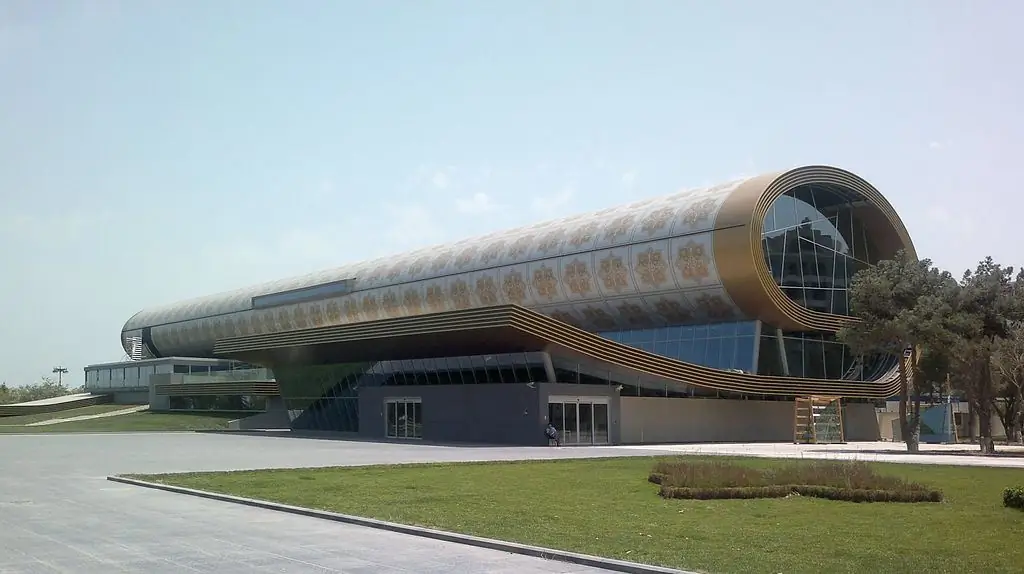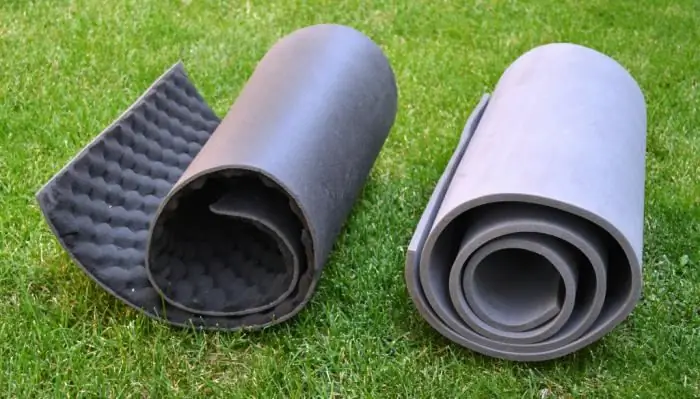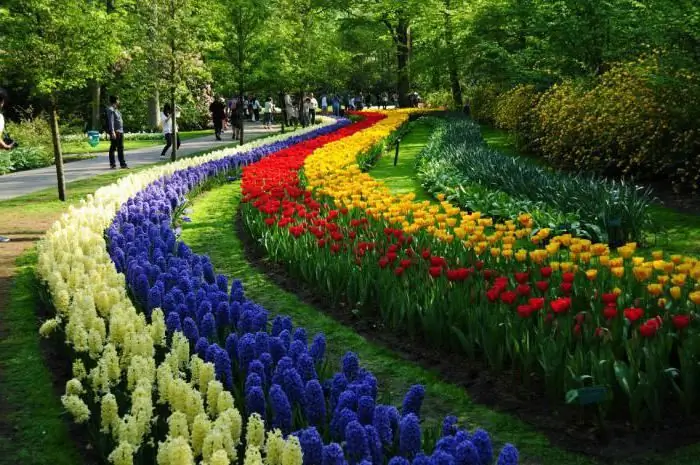- Author Harold Hamphrey [email protected].
- Public 2023-12-17 10:06.
- Last modified 2025-01-24 11:10.
The Carpet Museum in Baku is located in the center of the Azerbaijani capital. An unusually shaped building, a rare exposition of oriental carpets, guided tours by experts or an audio guide attract tourists from all over the world. Local residents, connoisseurs of the Azerbaijani art of carpet weaving, and those who just want to admire the intricate and colorful patterns of carpet works, also become frequent visitors to the museum.
History of carpet weaving in Azerbaijan
Archaeological finds claim that carpet weaving has been practiced on Azerbaijani soil since the Bronze Age. The description of this ancient type of arts and crafts is found in ancient writings and historical books, folklore and fiction. Developing over the centuries, absorbing the best traditions and schools of carpet weaving, the products of Azerbaijani masters have become in demand all over the world.

Today there are sevenschools of carpet weaving in Azerbaijan. In the production of pile and lint-free carpets, national features of culture and production are preserved and carefully protected. One of the main ones is considered to be high density: from 1600 to 4900 pile knots per 1 sq. decimeter. An important factor is the use of natural thread dyes, which do not damage woolen threads, give them a special shine and juiciness. And, of course, the basis of the carpet design, which has preserved the centuries-old genetic memory of the Azerbaijani people.
Creation of the Carpet Museum in Baku
Latif Hussein ogly Kerimov, Azerbaijani carpet weaver, People's Artist of the Republic, laureate of the Stalin Prize, in the middle of the 20th century proposed the creation of a carpet museum. He justified his petition with the desire to preserve the precious works of his ancestors for posterity, to study them with the help of advanced science, to involve the traditional techniques of the oldest masters in modern carpet weaving, and to train the younger generation of weavers.

In April 1972, the world's only specialized museum was opened. The leader of Azerbaijan, Heydar Aliyev, arrived at this solemn event, who at one time supported the initiative of L. Karimov and provided him with the necessary assistance in the process of work. Under the collection of the Museum of Carpets in Baku, a small building of the Juma mosque was given, which after a while turned out to be cramped for an overgrown collection of valuable exhibits. In 1992, the mosque was returned to the fold of religion, and the museum temporarily moved to the building of the Museum Center. It wasa decision was made to build a new, original, modern building for the collection of carpets of the Azerbaijani school.
Construction of a new building
The ceremony of laying the first stone was held in May 2008, and in 2014 the Carpet Museum was opened in Baku at the address: M. Useynov Avenue, 28.

Since the architecture of the capital of Azerbaijan has changed dramatically over the past decades, changing the face of the city unrecognizably, specialists approached the work on the building project in the center of Baku very responsibly. Designers from around the world offered their projects. The choice fell on the Viennese architectural studio Hoffman Janz, who offered the original version. A spectacular structure in the form of a rolled carpet, which took six years to build, today adorns the center of Baku and attracts the attention of tourists.
Museum collection
The Carpet Museum in Baku is a treasury of Azerbaijan's national culture. His collection includes about 14 thousand items. Most of them are rare handmade carpets. But they are inseparable from other types of traditional, folk art, and therefore clothes, jewelry and chased products, objects made of glass, felt and wood are included in museum expositions.
But first of all, the museum is a scientific center for the preservation, study and development of carpet weaving in all regions of Azerbaijan. A place of honor in the collection is occupied by a fragment of a Tabriz carpet produced in the 17th century. There is a group of carpets rescued in 1992 from Shushi. Of interest are ceremonial carpets of the 18th century, for example, a gift from the groombride.

The original design of the building, which has convex-concave walls, made it possible to place the exhibits in such a way that visitors can see the most intricate pattern without interference. In 2005, the "Carpet Law" was issued, legally ensuring the safety of rare items.
Museum Departments
The Azerbaijan Carpet Museum in Baku occupies a four-story building. The storage facility, located in the underground part, is equipped with the latest science and technology. It automatically provides the environmental parameters necessary for the preservation of woolen products. There are also restoration workshops in which experienced specialists are able to extend the life of rare exhibits. Today, restorers work based on objective data on the state of the fiber, which is carried out in the laboratory located here. The last section of the museum, located in the underground part, is a voluminous and valuable archive.

The first floor of the building is occupied by scientific and administrative departments. The entire second floor is given over to specialists who study carpet weaving and sewing. For their activities, they have extensive library material. On the third floor there are modern and comfortable rooms for meetings, conferences, presentations.

Interest for the audience is the last floor of the Carpet Museum in Baku. According to visitors, along with an impressive collection of carpets exhibited here, people are not left indifferentthe work of the weavers who sit at the windows in each hall, as well as the views of the Caspian Sea from the height of the fourth floor.
Global recognition
The exhibits of the museum are shown not only in Azerbaijan, the collection has visited 50 countries of the world. There have been several world symposiums on the Azerbaijani carpet, the last of which was held in Paris. A documentary was made about the history and production of the Azerbaijani product.
Photos of the Carpet Museum in Baku, its beautiful and rare exhibits adorn the pages of albums, books, magazines and booklets; The country's carpet art is included in the UNESCO World Heritage List.






